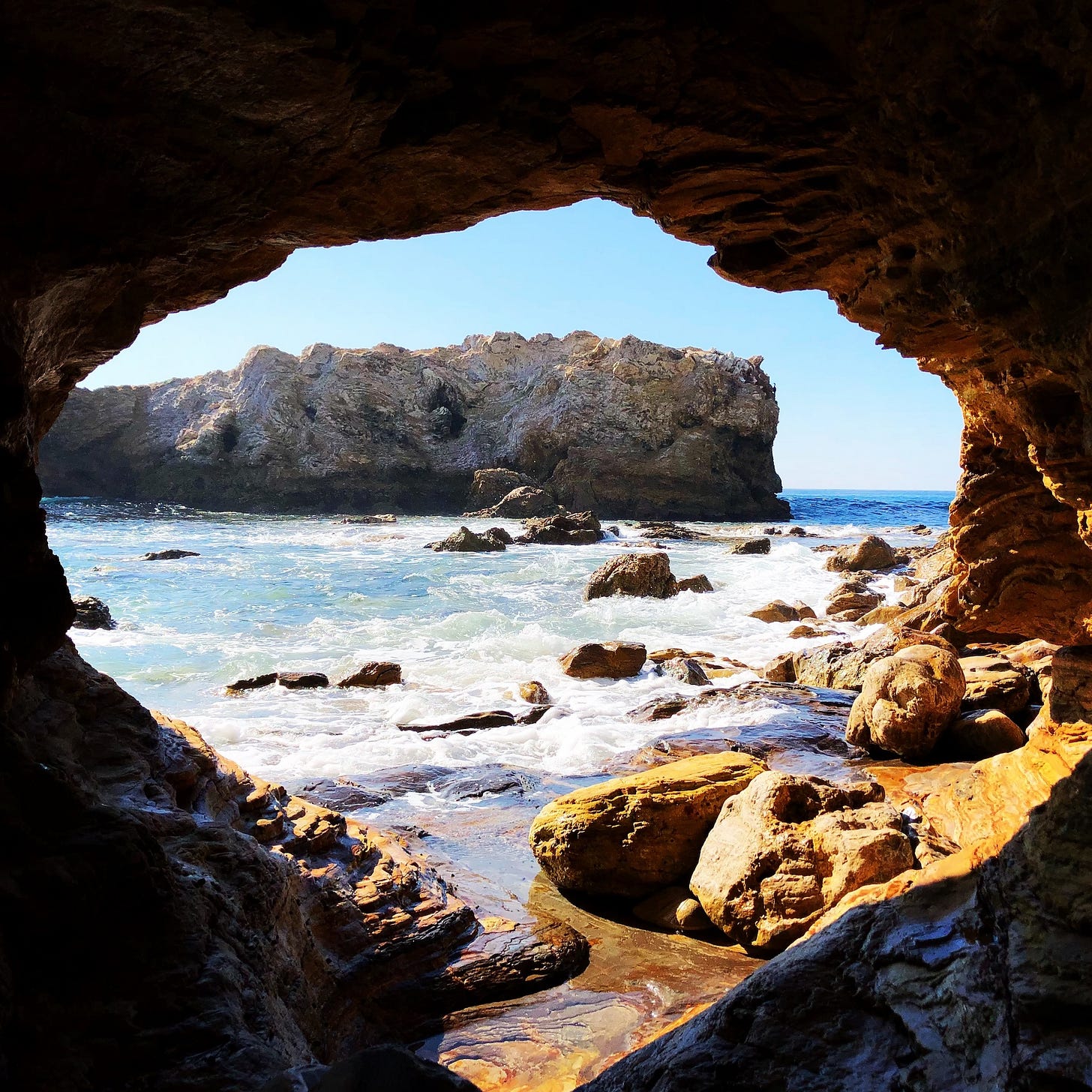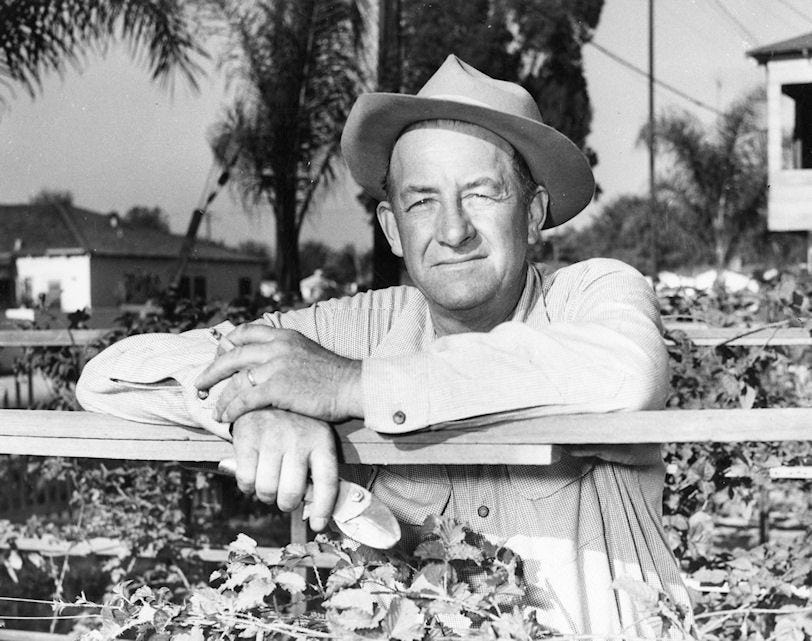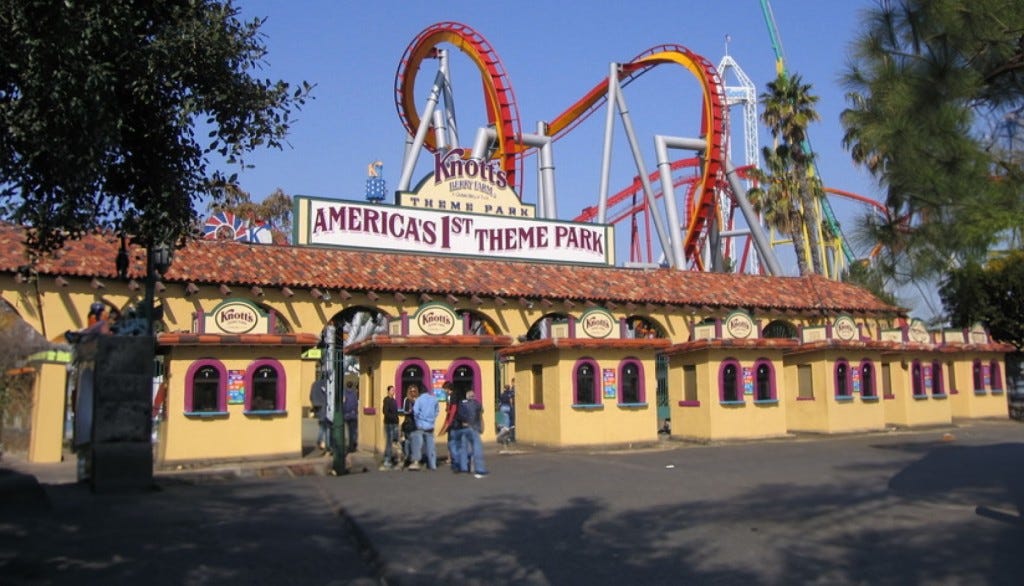The Sweet Journey of the Boysenberry
How a Humble Berry Helped Build a California Theme Park Legacy...and why California is One of the Best Places to Grow Most Anything
California has long been a cradle for horticultural innovation. You might remember our story on Luther Burbank, the prolific plant breeder who worked from his modest farm in Santa Rosa and whose pioneering work led to the creation of the Burbank potato, the ancestor of the Russet Burbank, the variety that became the backbone of the modern french fry (no, french fries do not have backbones). Without Burbank’s quiet tinkering, the fast-food world (and your local diner) would be a bit different today.
California’s Mediterranean climate, marked by mild, wet winters and long, dry summers, proved to be a kind of natural laboratory for agricultural experimentation in the early 20th century. As settlers and scientists began to recognize Southern California’s unique growing conditions, the region became a hub of horticultural innovation.

California’s track record of innovation in fruits, vegetables, and nuts is a reminder of just how much of a powerhouse the state is when it comes to creating new edible varieties for the world. The state, for example, is a powerhouse of strawberry innovation, with UC Davis alone creating roughly 60% of the world’s strawberry cultivars (this is a story we’re working on now. It’s really interesting.). But among all the berries California produces, only one led to the creation of one of Southern California’s most iconic tourist destinations: Knott’s Berry Farm.
The journey of the boysenberry begins with its namesake, Rudolph Boysen. In the early 1920s, Boysen, a curious California-based farmer and horticulturist, began experimenting with berry plants at his home in Napa, California. He wanted to develop a new hybrid berry that combined the best attributes of the European raspberry, blackberry, American dewberry, and loganberry.
Boysen moved to Orange County in the 1920s, and planted his experimental berry vines on his in-laws’ property in Anaheim, hoping the mild climate would help them thrive. In 1923, he successfully grafted a new hybrid berry that began to grow. But scaling it up proved difficult, and a few years later, he suffered a serious accident to his back that left him unable to continue working. Alas, the berry vines were left untended, fading into obscurity.
But then came along Walter Knott, a fellow farmer with a keen eye for opportunity who also saw Southern California as an ideal place for growing and experimenting with new crops. At the time, the region was booming, with families moving west in search of a better life. Orange groves stretched for miles, and agriculture offered a stable and year-round growing opportunity. (Remember how BIG agriculture has been in California for many years.)
When he discovered that Boysen had given up his cultivation experiments, Knott tracked him (and his new berry) down. Accompanied by George M. Darrow of the USDA, the duo met Boysen amidst overgrown weeds, and discovered a few withering vines clinging to life.
Walter Knott didn’t just revive the berry, he built a legacy around it. After coaxing the withered vines back to health on his Buena Park farm, he named the fruit after its original creator, Boysen, a rare gesture of credit in an industry that often favors the commercializer over the inventor. Knott's wife, Cordelia, played a crucial role too. She began baking boysenberry pies and making preserves that quickly became a hit with locals. Their farm stand grew into a destination, eventually transforming into Knott’s Berry Farm, California’s first theme park.
What started as a roadside attraction built on a fragile hybrid berry evolved into one of Southern California’s most iconic landmarks.
The boysenberry itself never became a mass-market staple like the strawberry or blueberry, largely because it’s too delicate to ship long distances. Also, they have a very short shelf life once they are picked, often only a few days, which limits their availability in supermarkets unless they're frozen or processed. For many, tasting a fresh boysenberry is still a rare treat, tied to place and season.
Though commercial production has shifted mostly to Oregon and New Zealand, Knott’s Berry Farm continues to celebrate the berry each year with its Boysenberry Festival (usually in April), where, if my research is correct, you can get boysenberry cornbread, Fried Cheesecake on a Stick with Boysenberry Sauce, Boysenberry Pizza, boysenberry funnel cakes, and even cocktails like boysenberry tequila smash. Also, remember Steve Martin largely began his comedy career working at Knott’s, something that always makes me smile a bit.
Today, it’s a full-blown amusement park with high-speed roller coasters like GhostRider, a massive wooden coaster, and Silver Bullet, a looping steel ride that twists over the park’s lake. The Timber Mountain Log Ride, one of the park’s most beloved attractions, simulates a journey through a 19th-century logging camp, complete with animatronic lumberjacks and sawmills. It’s a tribute to the massive wooden flumes that loggers once built to move timber from deep in the forest down to the mills and markets. One of the largest of these actual flumes was built at Converse Basin, once home to the biggest contiguous grove of giant sequoias on Earth. That same area became the site of one of the most devastating logging operations in American history, where thousands of ancient sequoias, some millennia old, were cut down in the rush to harvest timber. We did a story about it that you can read here. It’s a sobering reminder of how quickly early California’s natural wonders were exploited in the name of progress (ok, stepping off soapbox).
Biologically, the boysenberry is a testament to the wonders of plant hybridization, showcasing the ability to combine distinct plant species to produce something entirely new…and tasty. The boysenberry isn’t just a product of careful crossbreeding; it’s a classic California story of perseverance, partnership, and a dose of luck. Sunshine helps too. It’s about how a nearly forgotten berry was saved from obscurity by two determined farmers and went on to become a symbol of California itself, thanks in part to the magic of an amusement park.
Which reminds me, I haven’t been to Knott’s in years. Maybe it’s time to go.









Mmmm, the list of boysenberry foods interests me much. I think I've eaten boysenberry once, maybe on a visit to Knott's Berry Farm, but I can't remember what it tastes like, I keep thinking of balckberry taste.
Even amongst the Mediterranean climates, I believe California has the best.
Interesting. My mother grew boysenberries on our little farm, and as a little kid I refused to eat them because I had misheard the name.
I thought they were "poison berries."